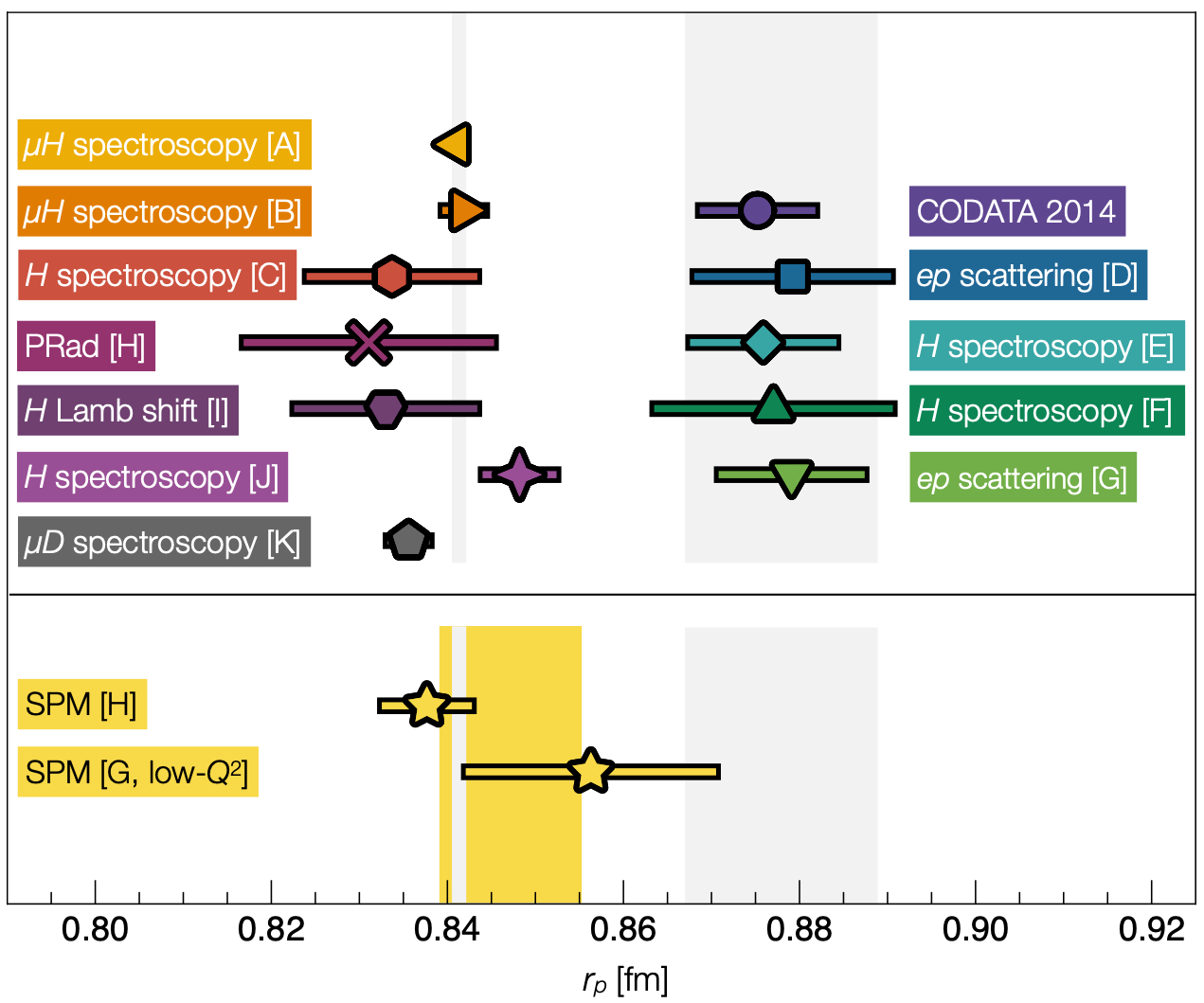ECT* and the Proton Radius Puzzle
The article “Fresh extraction of the proton charge radius from electron scattering”, by Zhu-Fang Cui, Daniele Binosi, Craig D. Roberts and Sebastian M. Schmidt, a team joining Nanjing University (Nanjing, China), ECT* (Trento, Italy), and Helmholtz Zentrum Dresden Rosendorf (Germany), has just been published in the prestigious journal Physical Review Letters.
The article adapts what has come to be known as the “statistical Schlessinger Point Method (SPM)”, refined by the authors in modern hadron physics applications, to completely new situations, to wit, the analysis of precise experimental data without reference to any theoretical model or prejudice. In this particular case, it was applied to what is widely known as the “proton radius puzzle”, viz. the fact that the size of a proton seems to depend on the method used to measure it, with electron spectroscopy and electron-proton (e-p) scattering experiments agreeing on the value 0.8751± 0.0061fm, whereas muon spectroscopy experiments produce a value of 0.842 ± 0.001 fm.

This new analysis suggests that the explanation for the mismatch which spawned the puzzle lies rather in an underestimation of the systematic error introduced by the use of specific, limiting choices for the functions employed to interpolate and extrapolate e-p scattering data. In fact, the SPM yields
0.847 ± 0.008 fm
for the proton radius, indicated by the gold band in the lower panel of the figure on the right.
Following the emergence of the proton radius puzzle, many new experiments were proposed. Amongst them is MUSE at the Paul Scherrer Institute in Switzerland, which will use muon-proton scattering to extract the proton radius. Quoting a member of the MUSE Collaboration (not involved in the article): “I think that the method is something that needs to be publicized, because once thought about, it is clearly what should be done.”
This remark has subsequently been confirmed by concrete calculations which establish that the proposed method is also directly applicability – without change – to the proton magnetic radius, pion charge radius, and the deuteron charge radius.
Indeed, it is becoming increasingly likely that the method introduced in this new publication will become a standard analysis tool for precise experimental data, in areas that stretch far beyond the proton radius puzzle.
Read the article HERE